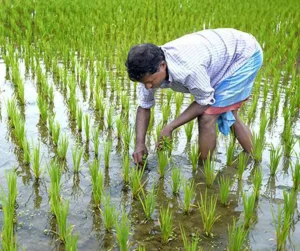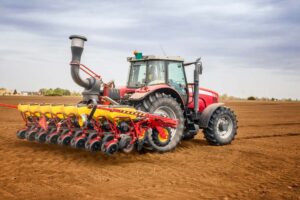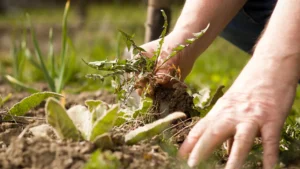Back to: Pre Vocational Studies Primary 5
Welcome to class!
Hello, my star student! I’m thrilled to have you back for another exciting learning adventure. Today, we’re going to talk about something very important: crop cultivation. This is all about how farmers grow the food we eat! It’s a fascinating process that involves many steps. Are you ready? Let’s get started!
Crop Cultivation

Have you ever wondered how the rice on your plate or the yam in your pounded yam gets there? It all starts with crop cultivation. Crop cultivation is the process of growing crops for food and other purposes. It involves a series of steps that farmers take to ensure a good harvest. It’s like following a recipe to bake a cake – each step is important!
Land Preparation

The first step in crop cultivation is land preparation. This means getting the land ready for planting. Farmers may clear the land of weeds, bushes, and trees. They may also plough or till the soil. Ploughing helps to loosen the soil, making it easier for plant roots to grow. It also helps to mix air and water into the soil, which are essential for plant growth. Imagine turning the soil in your small garden at home with a garden fork – farmers do the same thing, but on a much larger scale.
Planting

The next step is planting. This involves placing seeds or seedlings (young plants) into the prepared soil. Farmers use different methods for planting, depending on the type of crop. Some crops are planted by scattering seeds on the ground, while others are planted in rows or holes. The depth at which seeds are planted is also important. If they are planted too deep or too shallow, they may not germinate (start to grow).
Crop Maintenance
After planting comes crop maintenance. This is a very important stage where farmers take care of their growing crops. It involves several activities.
- One important activity is weeding. Weeds are unwanted plants that compete with crops for water, nutrients, and sunlight. Farmers remove weeds by hand, using tools like hoes, or by using herbicides (chemicals that kill weeds).
- Another important activity is watering or irrigation. Plants need water to grow, so farmers ensure that their crops get enough water, especially during dry periods. They may use irrigation systems like sprinklers or canals to water their crops.
Fertilizing
Fertilizing is another key part of crop maintenance. Fertilizers are substances that provide nutrients to plants, helping them to grow bigger and stronger. Farmers use different types of fertilizers, both organic (like manure from animals) and inorganic (chemical fertilizers).
Pest Control
Protecting crops from pests and diseases is also crucial. Pests are insects or other animals that eat or damage crops. Diseases are caused by microorganisms like bacteria or fungi. Farmers use different methods to control pests and diseases, including using pesticides (chemicals that kill pests) and practicing crop rotation (planting different crops in the same field each year).
Harvesting
Finally, after all the hard work, comes harvesting. This is when farmers gather the mature crops. Different crops are harvested at different times and using different methods. Some crops are harvested by hand, while others are harvested using machines. For example, maize is harvested by picking the ripe cobs, while rice is harvested by cutting the stalks.
Let’s use an example. Imagine a farmer growing tomatoes. First, they prepare the land by clearing it and ploughing the soil. Then, they plant the tomato seedlings. They regularly weed the garden to remove unwanted plants. They water the tomatoes regularly, especially during dry periods. They may also use fertilizer to help the tomatoes grow big and juicy. They protect the tomatoes from insects and diseases. Finally, when the tomatoes are ripe and red, they harvest them by picking them from the plants.
So, to summarize, crop cultivation is the process of growing crops. It involves land preparation, planting, crop maintenance (weeding, watering, fertilizing, and pest and disease control), and harvesting. Each step is important for a successful harvest.
Evaluation
- Can you name three steps involved in crop cultivation?
- Can you explain why weeding is important?
Excellent! You’re learning so well! I’m very impressed with your progress.
We have come to the end of this lesson.
In the next class, we shall be talking about the meaning of pre planting operations.
In case you require further assistance or have any questions, feel free to ask in the comment section below, and trust us to respond as soon as possible. See you in the next class!
